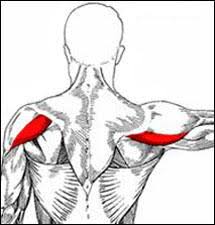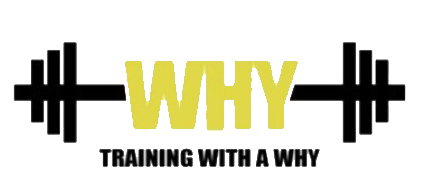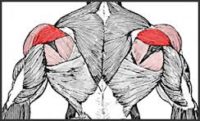The Boulder Shoulder Look
Few body parts or muscle groups stand out like a pair of broad, well rounded shoulders. Whether talking about football players, wrestlers, or everyday men, broad shoulders have long been linked to masculinity and are also aesthetically pleasing. Shoulder to hip ratio is an important aspect in bodybuilding. Wider shoulders and narrow hips are more eye pleasing for overall physique. Most bodybuilders or even regular gym goers know the importance of broad shoulders and thus spend a lot of time training for this very thing. However, what is not as well known, or gets enough attention in my opinion, is the importance of the rounded look. Rounded shoulders are often referred to as looking like “boulders” and give the shoulder a finished look. Experienced bodybuilders should know the importance of this finished look but this is something I often see overlooked by less experienced or aspiring bodybuilders and everyday gym goers looking to improve their physique. Sure, doing overhead presses and lateral raises will cause the shoulders to grow into an impressive size, but to achieve the rounded, finished look it takes a little bit more attention to detail. I think of it as icing on a cake. The specific muscle that helps achieve this rounded look is the rear delt. The rear delt is such a small muscle that it can be difficult to isolate. It’s often overlooked and at the end of a shoulder workout, if trained at all. My guess is that it is often overlooked because either it’s not as fun to train because you don’t need or shouldn’t use super heavy weight and/or most people just don’t realize how to target such a small muscle. I want to give you my two favorite exercises for training the rear delts as well a couple tips to ensure that you see the improvement you want.

Face Pulls
Face pulls is a great exercise for the rear delt, one of my favorites. I see it done a lot at the gym but I think its purpose is misunderstood by most people. I think that most people use face pulls as an upper back exercise. And while yes, it can be an effective way to hit the upper back, its greatest use is to target the rear delt. There are plenty of other exercises that you can choose for the upper back and get more bang for your buck. Your first question may be, “well how can one exercise have two different purposes?” This is a fair question and the answer is an easy one, the weight used. Exercises having multiple purposes is actually fairly common in bodybuilding. One isn’t necessarily better than the other, it just depends on your goals. Our goal for the face pull in this article is to target the rear delt. Because the rear delt is such a small muscle heavy weight is not necessary. Weight is usually the main factor in determining what the purpose of an exercise. When using face pulls for the upper back heavier weight and less controlled movement can be utilized. When a small muscle like the rear delt is the target it is important to use lighter weight that can be controlled throughout the entire range of motion.
- Attach a rope to the cable and positon the attachment so that it is slightly above your head.
- Grasp the rope in each hand with a soft, loose grip.
- When pulling back the rope think about pulling with your elbows. Your elbows should always be higher than your hands. (Elbows should go back, out, and up.)
- When at the end position hold for a second or two before returning to the starting position.
Tips:
When holding the rope, make sure your grip is loose. This will ensure that the muscles of your arms aren’t doing the majority of the work. Thinking of pulling with your elbows will help reduce the amount of momentum you use and further take your arms out of the equation. Make sure the weight is light enough that you don’t feel you have to use other muscles to help complete the reps (i.e. biceps, traps, and other muscles of the upper back.)
Video Here: Face Pulls
Rear Delt Fly’s
Rear delt fly’s is an exercise I’ve probably seen done a hundred different ways in the gym. I’ve personally tried many different variations and the one I will discuss in this article has been the most effective. Again, you have to realize the purpose of an exercise in order to get the full benefits from it. This exercise is not for the upper back or even the shoulder as a whole. It is to target a very small muscle that is difficult to isolate. It isn’t difficult to spot someone doing rear delt fly’s with too much weight. They are usually sitting on an end of bench with a dumbbell in each hand flailing their arms in the air trying to raise the weight in any way they can. This is an effective way to achieve nothing.
- Set up an incline bench so that you can stand behind it and rest the top of your chest on the top of the bench with a slight lean to your body.
- Grab a dumbbell in each hand and start with your arms hanging and palms facing each other (neutral grip).
- Raise your arms with elbows slightly bent out to the side with thumbs slightly rotating downwards, as if you were pouring out a pitcher of water.
- Stop when you feel the tension leave your rear delt and travel to your traps and upper back.
- At the top (end positon) hold for a second or two before returning to the starting position.
Tips:
This is an extremely light weight exercise. Heavier weight will force you to use either momentum, upper back muscles, or both. Make sure your arms are traveling straight up to the side. Going forwards will involve the side and front delts and traveling too far backwards will involve the upper back.
Video Here: Rear Delt Flys
Concluding Points
The reason your shoulders don’t look like you think they should after training them every week, maybe a few times a week, is because you aren’t training the entire shoulder effectively. Training the rear delt effectively will achieve the rounded look and in turn make already big and broad shoulders look even more impressive. As previously mentioned, because the rear delt is such a small muscle it doesn’t need to be trained with heavy weight. It will grow by using lighter weight in a very controlled manner. Also, as with any weak point, I recommend training your rear delts multiple times a week. Even when it’s not shoulder day or upper body day go ahead and put face pulls and/or rear delt fly’s at the end of your workout to see the growth you want. You don’t have to worry about recovery since it is a small muscle using light weight and these aren’t high intensity exercises.
As always, thanks for reading and be sure to subscribe to this site and comment if you like these type of articles.


